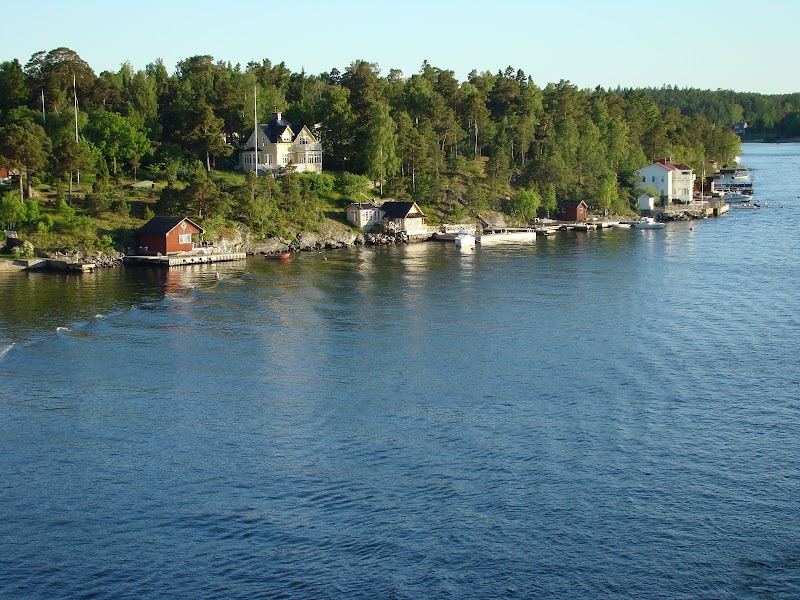
Charting the Stockholm Archipelago Race: An Adventure Through Sweden’s Island Labyrinth
Experience the Stockholm Archipelago Race, a demanding yet rewarding adventure across more than 30 unique islands. This guide offers a clear-eyed look at what to expect—from terrain and weather to cultural insights—arming you with practical tips for an unforgettable challenge through Sweden’s island wilderness.
Hydrate Consistently
Water stations are limited along the course—carry at least two liters and ration carefully. Dehydration saps energy fast in shifting coastal winds.
Choose Footwear Wisely
Wear trail runners with excellent grip and water drainage. Wet, rocky terrain demands stable footing to prevent slips and injuries.
Plan for Weather Shifts
Wind and drizzle come quickly off the sea, even in summer. Layer apparel with breathable, windproof fabrics to stay dry without overheating.
Pace Through Elevation Changes
Elevation gains come in sharp bursts—manage effort on climbs to avoid burnout. Use downhill sections to recover but watch footing carefully.
Charting the Stockholm Archipelago Race: An Adventure Through Sweden’s Island Labyrinth
Crossing the Stockholm Archipelago in a race is more than a test of endurance—it’s a direct encounter with a landscape fiercely itself, where islands rise like sentinels from the Baltic Sea, endlessly challenging the body and mind. The race course weaves through over 30 islands, with distances spanning approximately 50 kilometers, demanding nimble navigation through mixed terrain: rocky shores that dare your footing, buoyant forest trails, and quick-changing weather that pushes you forward yet warns you to heed its moods.
Preparation is paramount. Elevation gain is modest but deceptive, concentrated in short, sharp climbs that catch you off guard when fatigue sets in. Terrain shifts fast—some paths are ridge-like, allowing sweeping views across cold blue waves, while others dig into thick pine forests where sunlight trickles down, creating a quiet vigil. The sea isn’t a distant companion but an active participant, its currents and tides shaping the race’s rhythm.
Start timing early in summer months to take advantage of long daylight hours. Hydration stations are sparse; carry a minimum of two liters of water and compact nutrition to sustain energy. Footwear should feature solid grip and quick drainage, the archipelago’s wet stones and sudden puddles demanding agility and cautious steps. Windproof layers matter—you’ll feel the sea’s breath around every bend.
Beyond physical demands, the experience tethers you to a fascinating local culture. The archipelago hosts centuries-old fishing villages, their wooden homes clinging to rocks like stories etched in timber. Pause if you can to savor the quiet, letting the rhythm of water and wind reorient your pace.
The race is an intense journey. Each island’s personality emerges: some are silent and dense with forest; others open wide to reveal bold granite cliffs. Early morning fog can veil paths and smooth rocks, making each step a dialogue with the environment’s raw forces. Respect the sea’s edge; currents around narrow straits can spike unexpectedly, reminding runners they are guests in a world that holds its own rules.
For everyone from seasoned racers aiming to push limits, to hikers intrigued by the challenge of island hopping, the Stockholm Archipelago Race offers a gripping blend of adventure with indispensable practicalities. This balance ensures the race is not just completed, but experienced—a pulse-quickening encounter with Sweden’s wild, watery heart.
Nearby Trips
All Adventures
Boat Charters
Water Activities
Adventures near Stockholm, Sweden
Discover the unique and memorable adventures that make Stockholm, Sweden special.
Frequently Asked Questions
How challenging is the terrain of the Stockholm Archipelago Race?
The terrain is diverse, mixing rocky shorelines with forest trails and sudden elevation changes. While not mountainous, the uneven footing and wet surfaces make it a technically demanding course that calls for appropriate footwear and caution.
Are there aid or hydration stations along the race route?
Aid stations are limited and spaced far apart. Participants must plan to carry adequate fluids and nutrition, with at least two liters of water recommended, especially during summer events.
Is prior navigation experience required to complete the race?
Yes. Parts of the course require map reading and route finding due to changing trail markers and variable island topography. Familiarity with basic navigational tools enhances safety and efficiency.
What wildlife might be encountered during the race?
Runners can encounter sea eagles gliding powerfully overhead, foxes slipping through the underbrush, and spring or summer amphibians near freshwater pockets. Respect for wildlife habitats is crucial.
What cultural or historical sites can be visited near the race course?
The archipelago hosts small fishing villages with wooden houses dating back centuries. Some islands feature remnants of wartime bunkers and traditional boathouses, adding cultural depth to the natural experience.
Are there environmental rules participants must follow during the race?
Absolutely. The archipelago is a protected natural area; runners must stay on designated trails, avoid disturbing wildlife, and carry out all trash. Leave no trace principles preserve the environment for future races.
Recommended Gear
Trail Running Shoes with Good Grip
Essential for traction on slippery rocks and wet forest paths.
Lightweight Windbreaker
Protects against sudden coastal winds and light rain without overheating.
Hydration Pack or Bottles
Key for carrying sufficient water across stretches without drinking stations.
Headlamp
Useful for early morning or late afternoon runs when daylight is limited.
Local Insights
Hidden Gems
- "Långviksskär – a quiet island with panoramic views rarely seen by casual tourists"
- "Ljusterö’s rocky cliffs where ancient runestones lie hidden beneath moss"
Wildlife
- "White-tailed eagle – the archipelago’s top aerial predator"
- "European otters frequenting freshwater inlets"
- "Harbor seals resting on isolated rocks"
History
"The Stockholm Archipelago served historically as a natural maritime defense and shelter, with fishing communities preserving traditional ways of life through generations. Many islands have WWII relics reflecting Sweden’s strategic neutrality."
